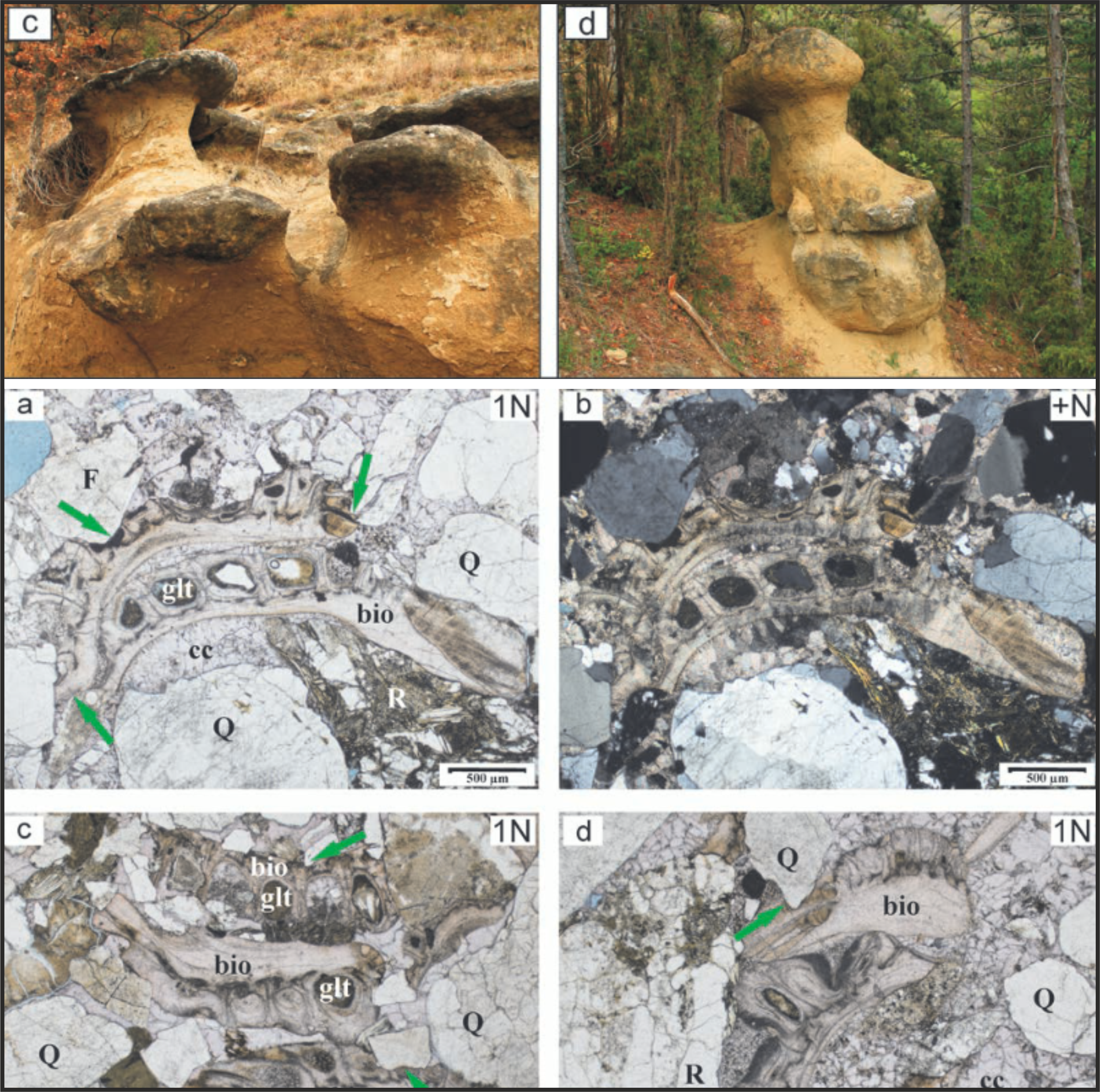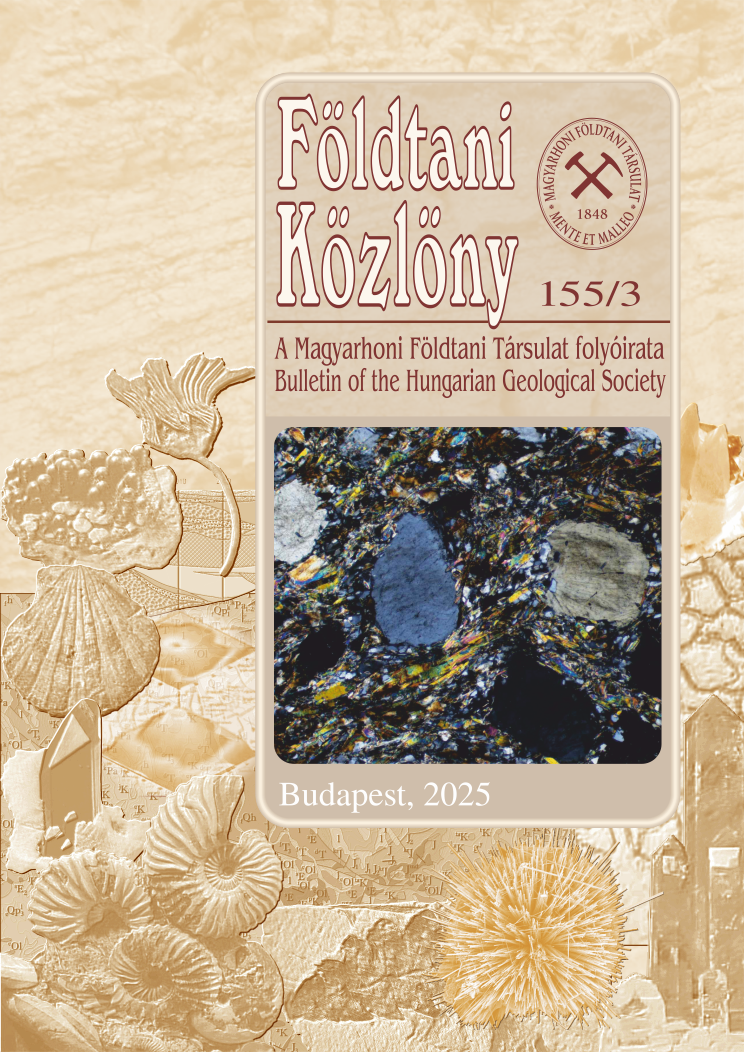Carbonate concretions in the Lower Miocene Pétervására Sandstone Formation (Pétervására Hills, Lelesz Valley): genetic considerations based on morphological and petrographic investigations
Abstract
Rocks of the shallow marine Lower Miocene Pétervására Sandstone Formation outcrop in spectacular forms in Northern Hungary. Origin of the typical carbonate concretions together with the mechanism of sandstone cementation is, however, still under debate. In this paper, selected outcrops of the Pétervására Sandstone (Pétervására Hills, Lelesz Valley) are studied using field observations and petrographic investigations. Based on our results, isolated (spherical and ellipsoidal) and stratabound concretions as well as continuously cemented layers were equally developed. In the isolated concretions grown in very coarse grained sandstones, bioclasts (e.g. mollusk fragments, benthic foraminifers) of different sizes and shapes were observed. Consequently, the primary source of the calcite cement could be the large amount of the detrital bioclast material (aragonite/calcite) in the studied formation. Related to the cementation processes, early crystallization of the calcite cement started around a nucleus concentrically and the diagenetic redistribution of carbonate phases could take place during burial by diffusion. Cementation and growth mechanisms of the concretions could be significantly affected by petrological characteristics of the sediments (e.g. sorting, grain-size distribution, permeability) and by the spatial distribution of nuclei. Additionally, based on the microtextural features, the significant amount of glauconite-like grains in the Pétervására Sandstone are dominantly detrital in origin and could form earlier in the intragranular pores of the redeposited bioclast.
















